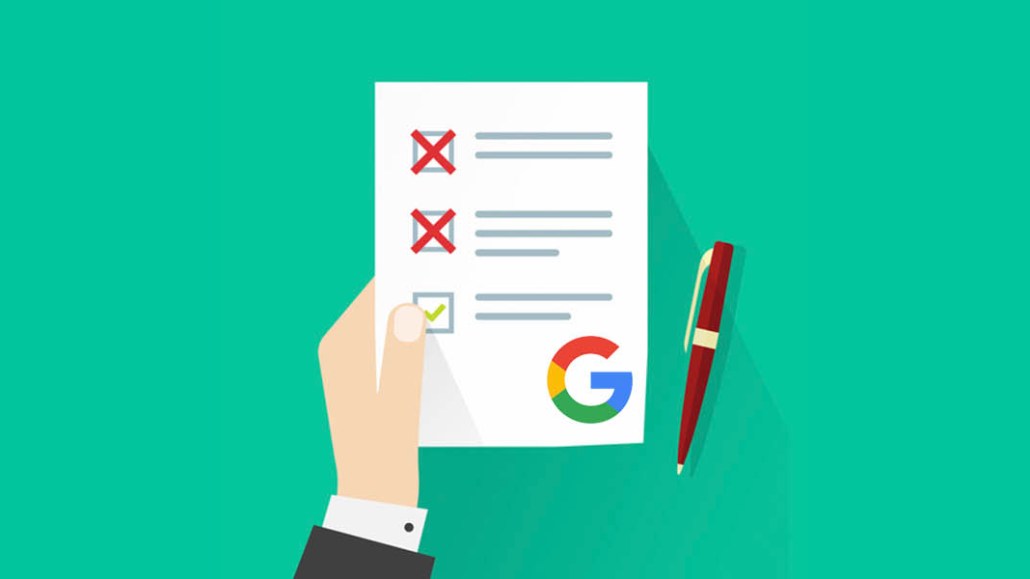Register by Jan 13 to save on passes and connect with marketers from Uber, Bose and more
Best of the week: The duopoly flexes its muscles as Snap continues to flounder

This week, our top stories covered Google’s Ad Experience Report, Facebook’s Watch platform and Snap’s second-ever quarterly earnings. As always, a full list of these articles appears at the bottom.
Google reveals sites that need ad adjustments
Google is using its new Ad Experience Report to evaluate and score websites based on their ad creative and design. The tool lets publishers fix their sites before Google releases its ad-blocking version of Chrome in 2018 and helps advertisers avoid running ads on sites with a poor user experience.
Key takeaways:
- Out of the 100,000 sites Google has reviewed so far, 700 need fixing.
- Half of the 700, including Forbes and Los Angeles Times, received “failing” status.
- The other half of the 700, including CBS News and Chicago Tribune, got a “warning.”
- After the new version of Chrome launches, publishers have 30 days to correct violations before Google pulls ads from their sites.
Publishers see the new version of Chrome, along with Apple’s plans to update its Safari browser to block video ads that autoplay and stop ad tracking, as solidifying control over platform giants’ own digital ad market share, which has grown at publishers’ expense.
“[Google has] gotten too much power over what’s acceptable,” said Paul Vincent, founder of Neuranet, a company that helps publishers comply with Interactive Advertising Bureau specs for fast-loading, noninvasive ads.
Eyeing YouTube, Facebook unveils Watch
Elsewhere in the duopoly, Facebook introduced a new video hub called Watch with the goal of getting people to spend more time watching videos on its platform, like they do on YouTube.
Watch is essentially a remake of Facebook’s video tab, available online and across Facebook’s apps for mobile devices and connected TVs. It offers a library of longer-form and episodic video shows made by publishers, celebrities and digital video creators. Watch also includes live sports, broadcasting an MLB game every Friday night.
“Now, Facebook wants to be in the same place, where at the end of a long day, you might sit down to watch something on Apple TV, and Facebook is now an option, too, alongside FX, YouTube and others,” said Eric Korsh, president of Mashable Studios.
Snap’s struggles continue
Snapchat parent Snap reported its second-ever quarterly earnings, in which it needed to show growth even though Facebook is copying its most popular features. Snap was expected to end the second quarter with about 174 million daily active users and $186 million in revenue, according to CNBC. But it fell short of both marks.
Can you guess when FB and Instagram started to clone Snapchat’s features? pic.twitter.com/vxFLXNoPG6
— Kurt Wagner (@KurtWagner8) August 10, 2017
Stat of the week
Quartz has conducted 540 branded-content campaigns for more than 150 brands since launching five years ago, with a renewal rate of 90 percent — nearly three times the industry average.
Quote of the week
A fashion editor anonymously tells Glossy about receiving free products from brands:
“There are definitely a few instances where I’ve developed closer relationships with a brand after they’ve gifted me and then continued to promote them, with the expectation that they’ll likely continue to send me stuff. Fashion editorial is very much an ‘I’ll-scratch-your-back-if-you-scratch-mine’ kind of world, which is just another reason why it feels laughable when any of us [poses] as a journalist.”
Interesting takes elsewhere:
- The Wall Street Journal’s Eric Bellman examines how tech companies are catering to internet newcomers who favor voice activation and communicating with images rather than text.
- Quartz’s Mike Murphy reports on Amazon’s tactic of selling Amazon-made products under brands it doesn’t make clear it owns.
This week’s top Digiday stories:
- Google reveals ‘failing’ ads, including Forbes, LA Times
- Facebook moves closer to YouTube and TV with new shows, Watch platform
- Snap continues to buckle under the weight of Facebook
- How Quartz achieved a 90 percent renewal rate for branded content
- Confessions of a fashion editor: ‘It’s an I’ll-scratch-your-back-if-you-scratch-mine world’
- Heineken prioritizes mass reach over hypertargeting on Google and Facebook
- Behind Amazon’s push into sports broadcasting
More in Media

Why publishers are building their own creator networks
Publishers are forming creator networks to regain control, combat traffic declines, and reach audiences shifting toward influencers.

The accidental guardian: How Cloudflare’s Matthew Prince became publishing’s unexpected defender
Cloudflare’s day job is fending off botnets and nation-state cyberattacks, not debating how Google and other AI firms crawl publisher sites.

A timeline of the major deals between publishers and AI tech companies in 2025
Here’s a list of all the major deals signed between publishers and AI tech companies in 2025.





